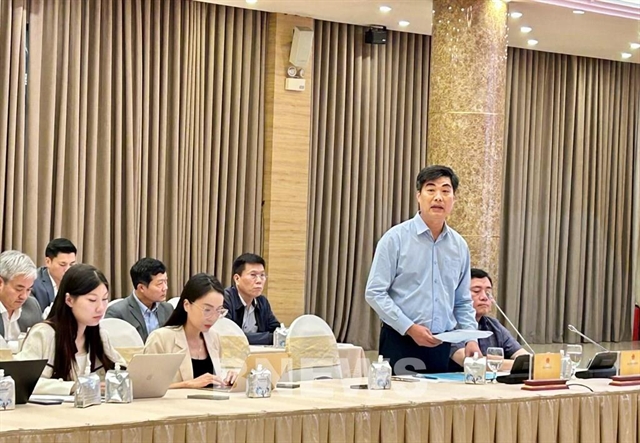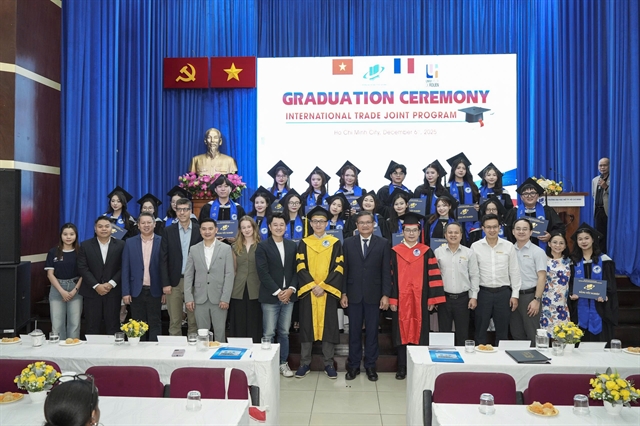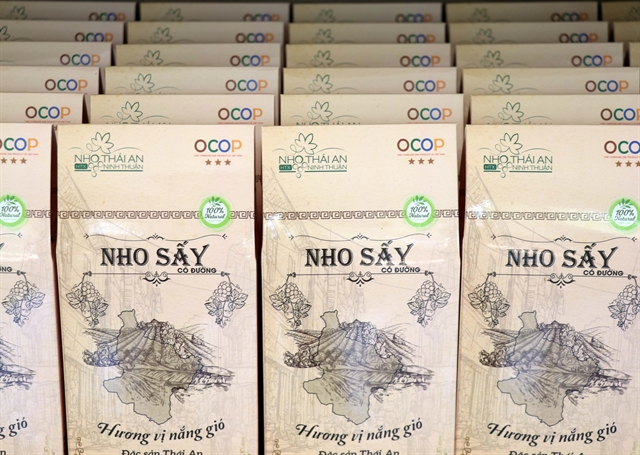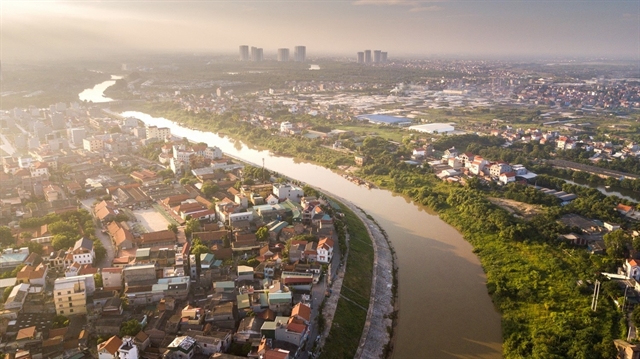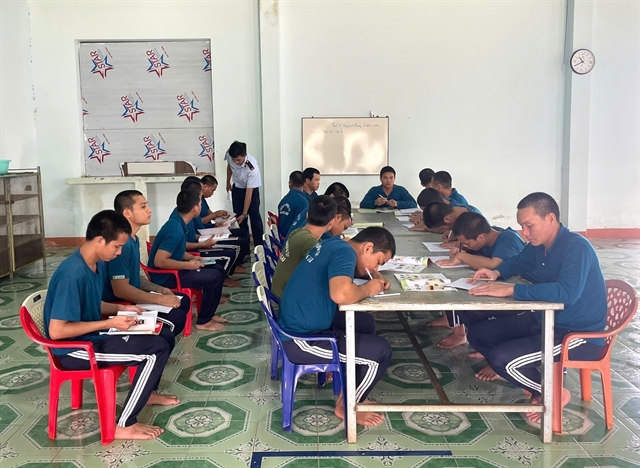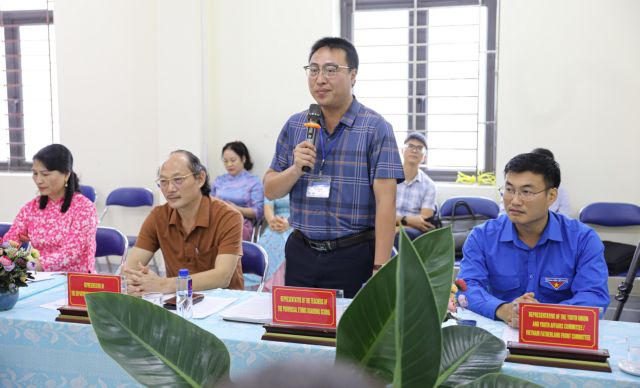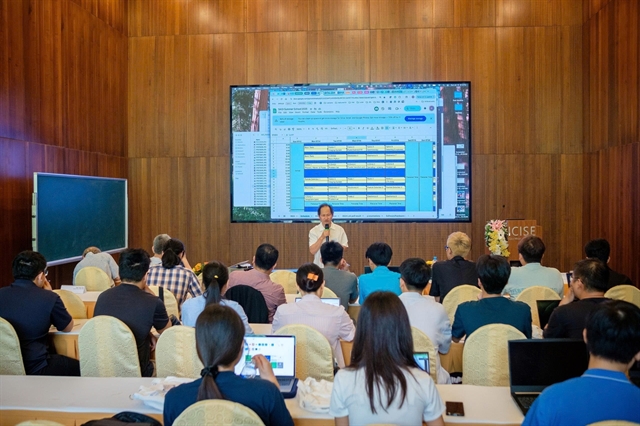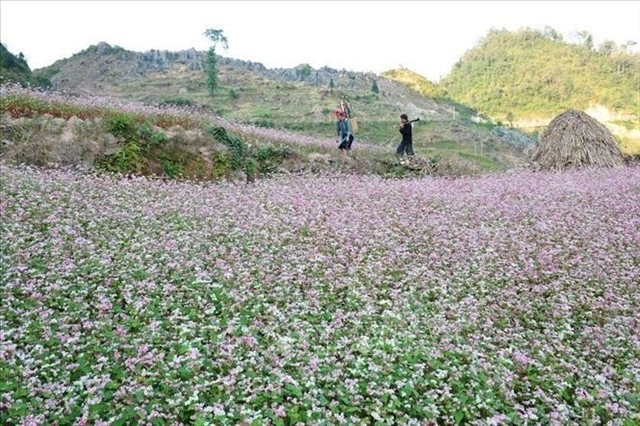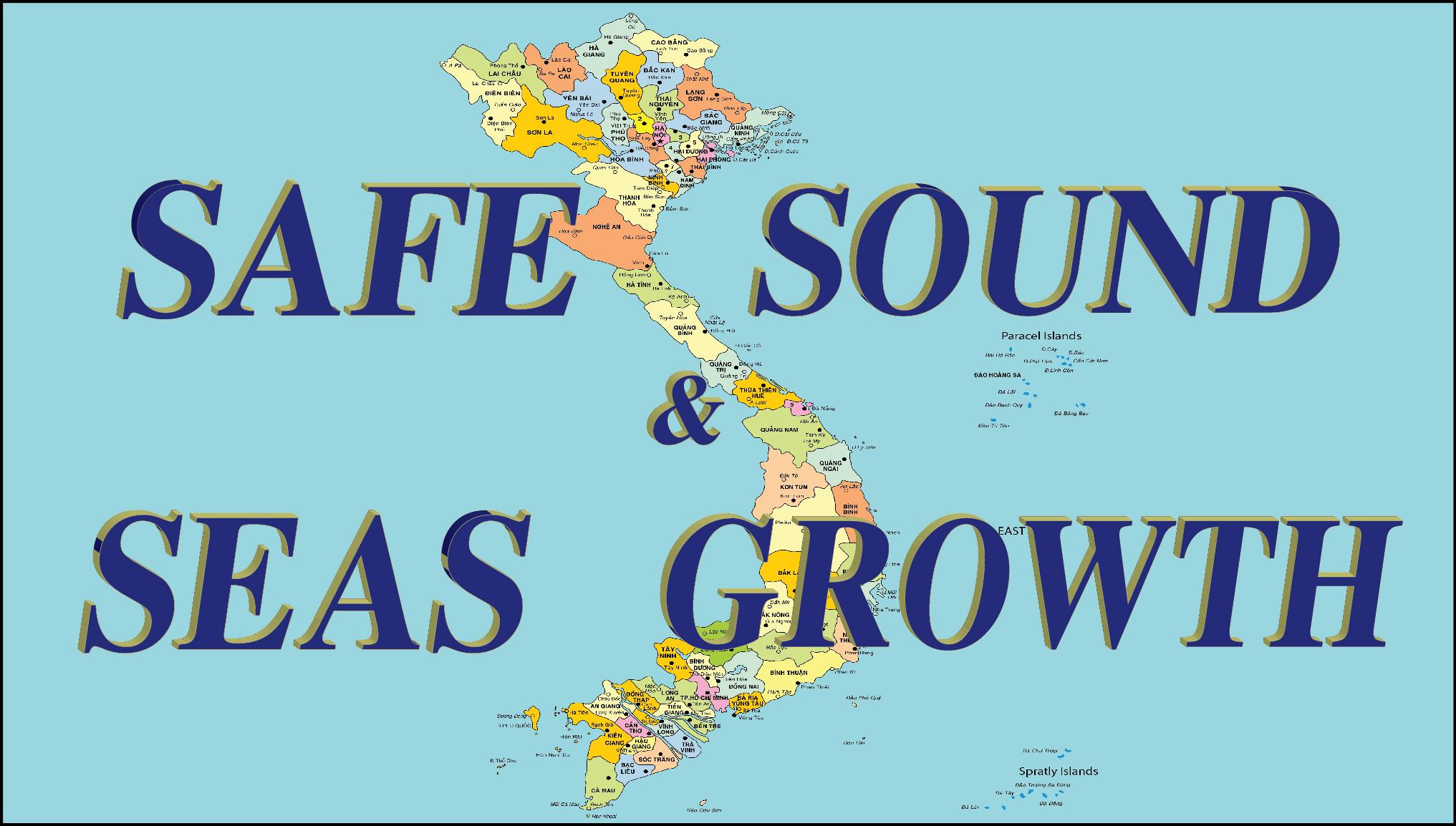
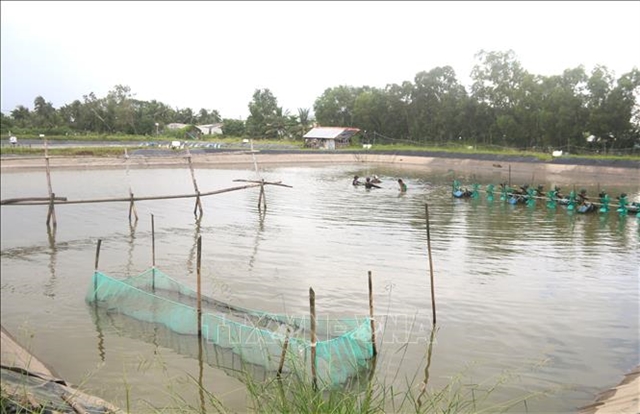 |
| A tilapia–shrimp rotating pond in Vĩnh Long Province’s Hiệp Mỹ Commune. – VNA/VNS Photo Thanh Hòa |
VĨNH LONG – Farmers in Vĩnh Long Province are expanding the model of breeding tilapia in coastal areas as it adapts to climate change, has high efficiency and is encouraged by local authorities.
Trần Thanh Toàn in Nhị Trường Commune said he breeds tilapia in a 3-ha farming area and achieved a yield of 50 tonnes per hectare in the last harvest.
With a selling price of VNĐ36,000 (US$1.4) per kilogramme, he earned a profit of more than VNĐ1.5 billion ($58,000), he said.
Previously, he bred white-legged shrimp but often faced risks due to disease outbreaks and price fluctuations, he said.
At the end of 2023, he tested farming tilapia and white-legged shrimp on a 5,000 sq.m farming area. After breeding for five months, he harvested nearly 25 tonnes of marketable tilapia. With tilapia selling at VNĐ35,000 ($1.3) per kilogramme and additional income from shrimp harvest, he earned a profit of nearly VNĐ300 million ($11,500).
After the trial, he switched to breeding only tilapia and expanded the farming area to 3 ha at the end of last year.
Tăng Hoàng Nam in Đại An Commune has a 3,000 sq.m farming area dedicated for breeding white-legged shrimp and goby fish. However, from April to January every year, he struggled to secure a consistent supply of brackish water necessary for these aquatic species, often leaving the pond idle.
At the end of last year, he used 1,600 sq.m of the farming area to breed 30,000 tilapia fingerlings. After seven months, he harvested 11 tonnes, and earned nearly VNĐ60 million ($2,300) in profit.
Tilapia is easier to breed than white–legged shrimp and goby fish as it requires simpler techniques, suffers fewer diseases, and has a survival rate of more than 90 per cent, he said.
Shrimp farmers in communes such as Cầu Ngang, Mỹ Long, Nhị Trường, Vinh Kim, and Hiệp Mỹ have expanded tilapia farming to nearly 40 ha.
The Cầu Ngang Commune Agriculture Service Centre under the province Department of Agriculture and Environment is assisting farmers to expand the model.
Nguyễn Trí Thông, the centre’s deputy director, said shrimp farming has faced increasing challenges in recent years due to complex disease outbreaks and rising input costs, while market prices remain unstable, causing losses for farmers.
“The tilapia farming model suits small-scale farmers with limited land and capital, and adapts well to climate change, especially in coastal areas where water salinity fluctuates,” he said.
Farmers can either specialise in tilapia or combine it with white-legged shrimp, both yielding high economic returns.
Combined tilapia and shrimp farming reduces risks, with both species less prone to disease and achieving high productivity, providing stable income on the same land area. Tilapia cultivation takes 135–140 days, while shrimp require 75–90 days.
To reduce losses and ensure market-quality fish, farmers should maintain a low breeding density of five to six fish per square metre and provide sufficient oxygen during cultivation to promote strong feeding, rapid growth, and high survival rates, Thông said.
The Cửu Long (Mekong) Delta province has a 130–kilometre coastline. The transition from shrimp to tilapia farming in the province is opening up sustainable livelihoods for coastal farmers.
Thanks to the province’s tilapia exports to the US, the prices of the fish rose to VNĐ36,000 ($1.4) per kilogramme last month, double that of the same period last year, and this increased profits significantly, according to farmers.
With a breeding density of about 10 fish per square metre, after five months, fish reach an average weight of 700–750 grammes. After deducting costs, farmers said they earn about VNĐ10,000 (38 UScent) per kilogramme.
Tilapia is a hardy species with low disease incidence, well suited to rotational farming in shrimp ponds. Besides economic benefits, tilapia consume leftover feed, reduce organic waste, and suppress bacteria that cause shrimp diseases, according to agricultural extension officers.
They have guided farmers to select high-quality fish breeds, adhere strictly to farming techniques, and establish partnerships with businesses along the production and consumption chain to ensure sustainable development and expand export markets for tilapia. – VNS
